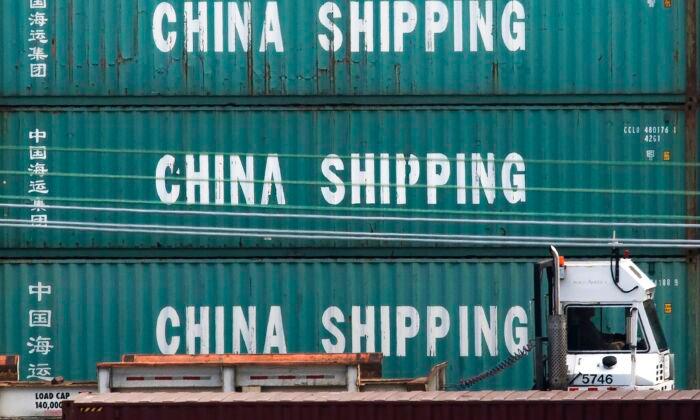American dependence on imports from China has significantly diminished in recent years. Companies are scrambling to redirect their supply chains elsewhere to avoid unpredictable policy changes by the communist regime, tariffs imposed on China in 2018, and backlash over human rights violations.
In particular, clothes and electronics imports, where China used to reign, have shifted.
China may in fact lose the position of America’s largest trading counterpart. In February, the United States imported more from Mexico than from China—a situation unseen for decades, save for the two months at the onset of the pandemic.
“While China remains the major supplier to the U.S. market, they are no longer a dominant supplier,” USFIA commented on the 2022 data.
The trend appears to be yet more prominent this year. America has imported close to $4 billion worth of clothes from Vietnam and Bangladesh, but less than $2.8 billion from China, in over the period of January and February, accounting for less than 20 percent import market share.
In the same period, some $20 billion in computers and electronics came from China, while over $24 billion came from Mexico, Taiwan, and Vietnam. That leaves China with less than 29 percent market share.
Aside from the tariffs, China exasperated retailers last year with repeated extreme COVID-19 lockdowns. The disease itself caused further disruptions.
It assigned the risk at 90 percent probability.
“Assurances from your Tier 1 suppliers that they don’t do business with China isn’t sufficient protection because those suppliers probably don’t have visibility through their entire supply network,” the report said.
“But they will feel the impact at some point in 2023.”
The report also assigned a 75 percent “Risk Score” to the eventuality that companies will be confronted over slave labor violations.

“Media investigators, NGOs, and other research teams investigating forced labor violations spurred the passage of the Uyghur Forced Labor Protection Act (UFLPA),” it noted.
“Investigators have uncovered links between several high-profile brand names and their sub-tier suppliers that utilized forced labor in Xinjiang, China. Your company could be in the next headlines, especially if it’s in the electronics or retail industry.”
Slave labor is sanctioned by the regime in China. Though the country’s vast network of “reeducation-though-labor” camps was officially closed down years ago, the practice continues in various other detention facilities. The use of this form of “reeducation” on the Uyghur minority in Xinjiang has garnered significant international attention, but it’s been widely used against the whole populace and prisoners of conscience in particular, including Tibetan Buddhists, democracy activists, underground Christians, and practitioners of Falun Gong.
Under UFLPA, 31 companies have been banned from U.S. imports for using slave labor in Xinjiang, but Everstream found at least 177 more.
“Expect those to surface in media coverage in the coming year,” the report said.
Microchip manufacturing is in the process of shifting away from China, but the process will take time, it said.
“Many chip-making companies decided to move out of China during the height of the COVID-19 pandemic and the chip shortages of 2020-2021. Because it takes about three years to build up a semiconductor chip plant, diversifying away from China will become evident in 2024 as those new plants come online.”






Friends Read Free